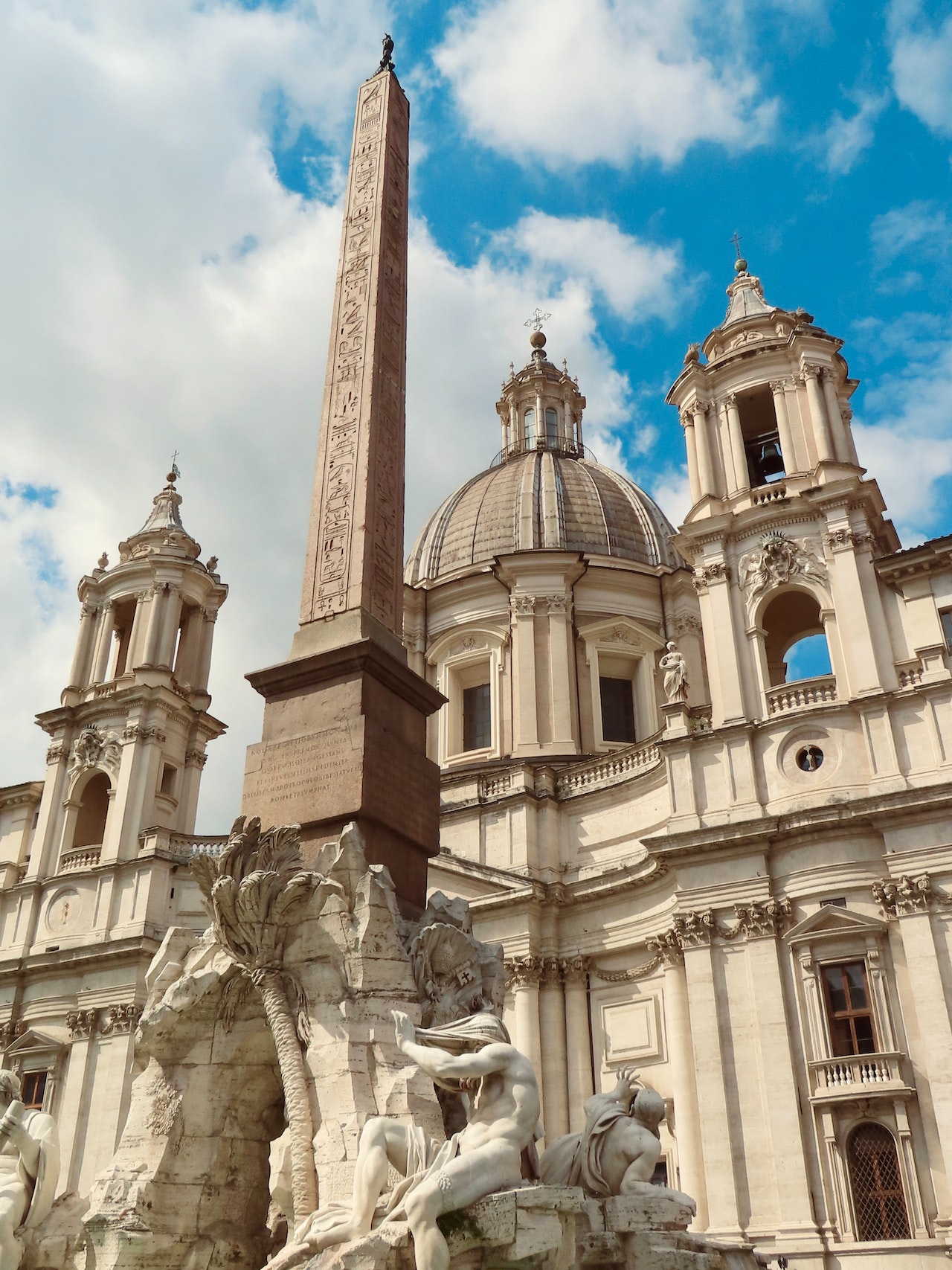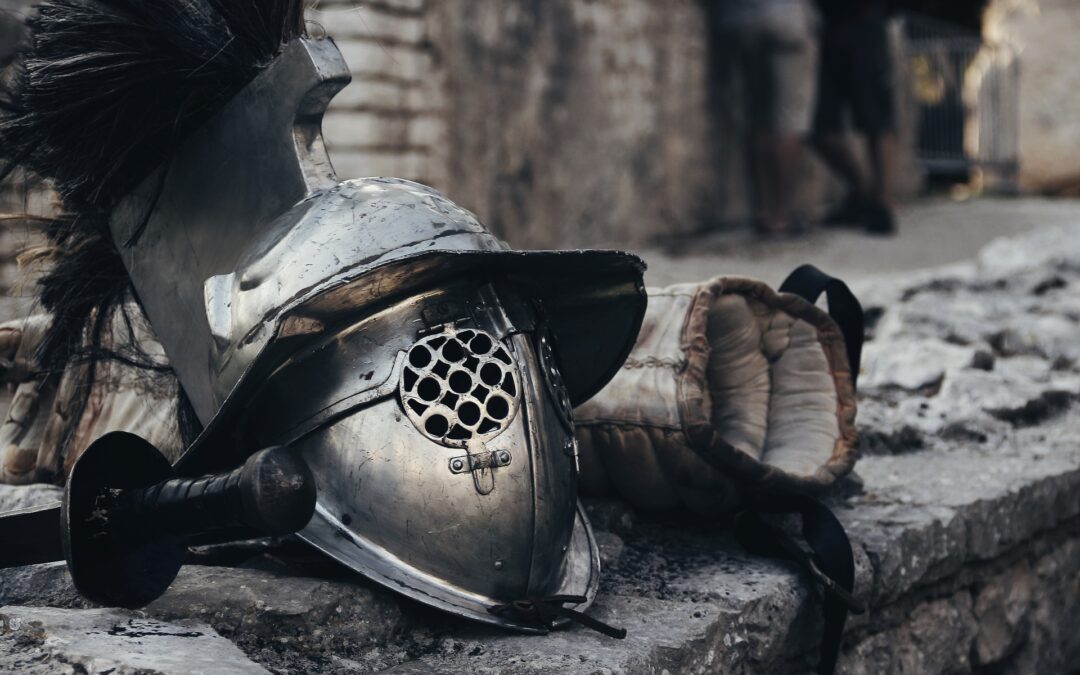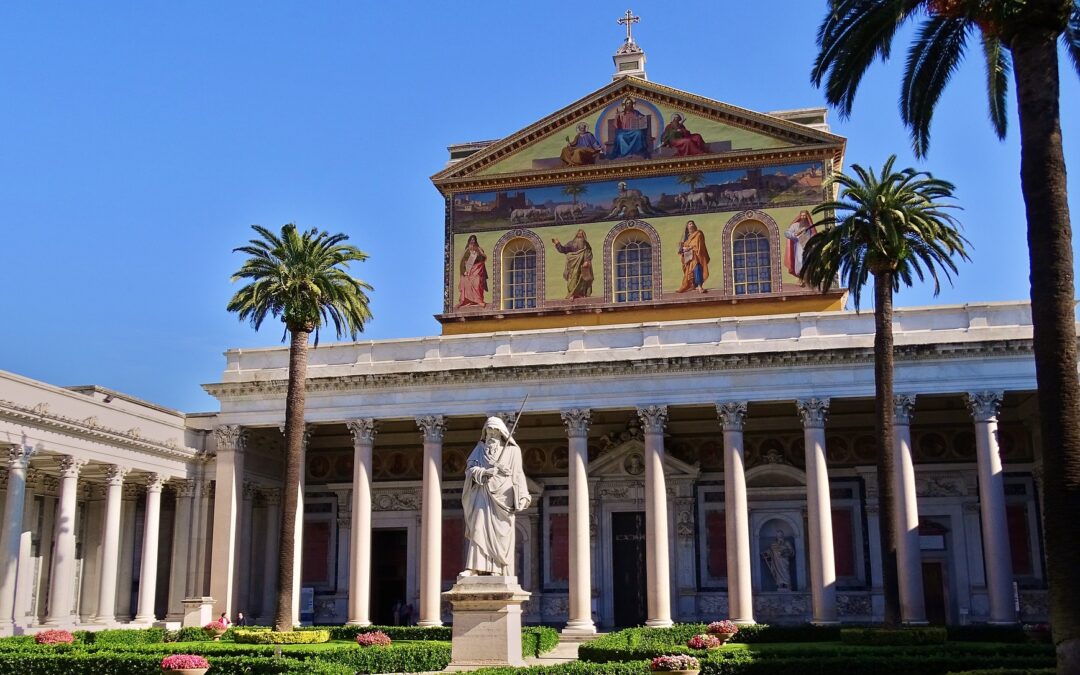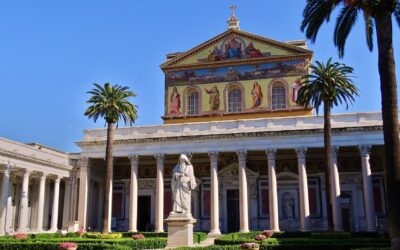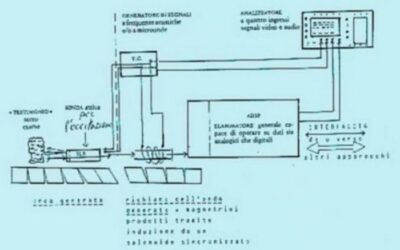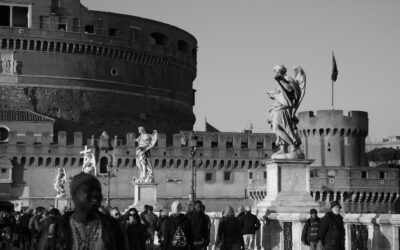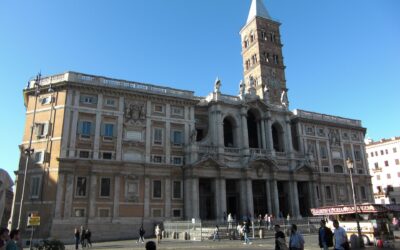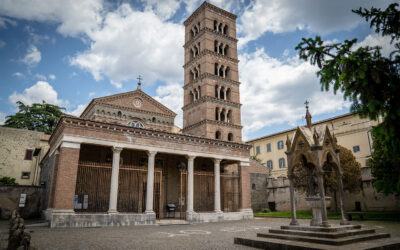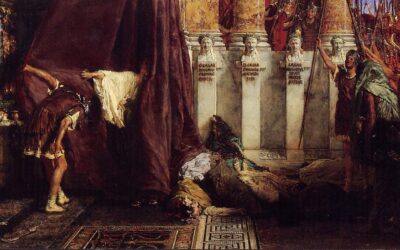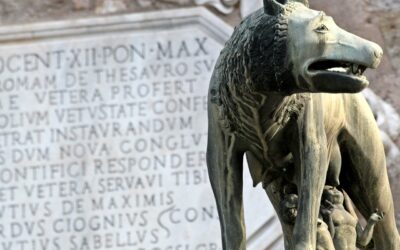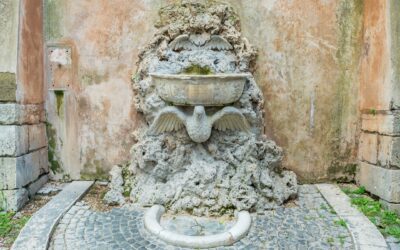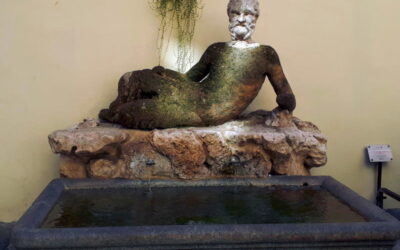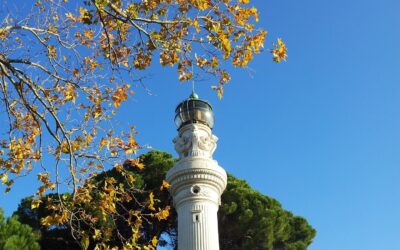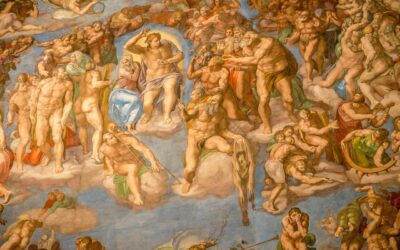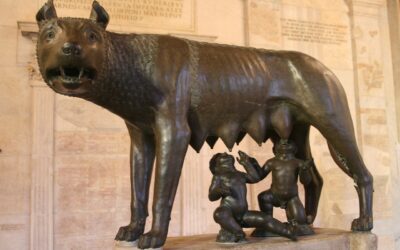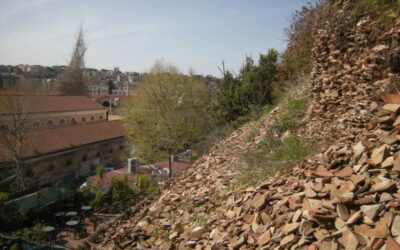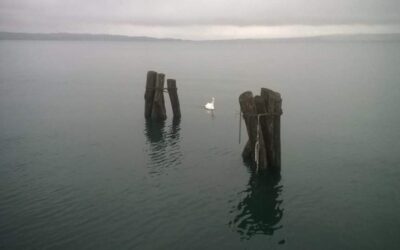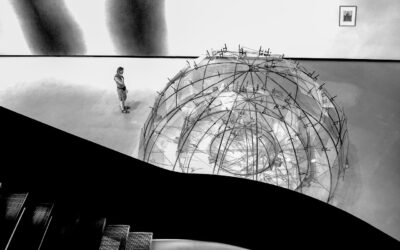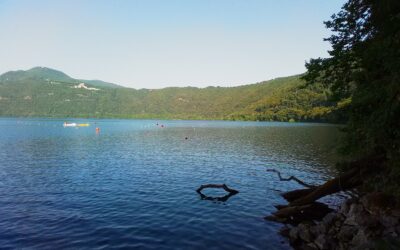Piazza Navona, one of Rome’s most iconic squares, is adorned with two architectural marvels: Bernini’s Fountain of the Four Rivers and Borromini’s Church of Sant’Agnese in Agone. While they both contribute to the square’s splendor today, their creation was marked by intense rivalry between two brilliant architects, Gian Lorenzo Bernini and Francesco Borromini. This rivalry not only shaped the development of these masterpieces but also influenced the course of Baroque art and architecture in Rome during the 17th century. This essay delves into the historical background of the conflict between the two artists, their respective creations, and the enduring legacy of their competing visions in Piazza Navona.
Bernini and Borromini: Background and Rivalry
Gian Lorenzo Bernini (1598-1680) and Francesco Borromini (1599-1667) were two of the most prominent architects and sculptors of the Baroque era. Both born in the late 16th century, they shared a passion for art but had vastly different personalities and approaches to their craft. Bernini, a prodigy from a young age, was a consummate courtier, favored by the powerful papal family, the Barberini. On the other hand, Borromini, a more introverted and introspective artist, was known for his intellectual depth and innovative architectural theories.
Their rivalry emerged during their early years in Rome when they both worked on various architectural projects. The competition between the two artists was fueled by their contrasting artistic visions and the patronage they received. The tension escalated when Bernini was appointed as the architect for the construction of the baldachin inside St. Peter’s Basilica in 1624, while Borromini was excluded from the project, leading to resentment and bitterness.
The Fountain of the Four Rivers
In 1651, Pope Innocent X commissioned Bernini to design the Fountain of the Four Rivers for Piazza Navona. This massive and opulent fountain was to replace an older structure and symbolize the papal family’s power. Bernini’s design features four colossal figures representing the four major rivers of the continents known at the time: the Nile, Danube, Ganges, and Plate. These figures support an ancient Egyptian obelisk, which adds height and grandeur to the monument.
The fountain is a stunning display of Baroque exuberance, capturing the movement and dynamism typical of Bernini’s style. The figures appear to be in motion, as if reacting to the rushing waters beneath them. Each statue represents a different river and, according to legend, hides a reaction to Borromini’s nearby church façade. For instance, the statue representing the Nile covers its face to avoid seeing Borromini’s work, supposedly out of disdain.
The Church of Sant’Agnese in Agone
Across the piazza, Borromini was working on the Church of Sant’Agnese in Agone, commissioned by Pope Innocent X’s family. Construction began in 1652, a year after Bernini’s fountain. Borromini’s architectural style was in stark contrast to Bernini’s flamboyance. He favored geometric complexity, concave and convex elements, and attention to intricate details.
The church’s façade, with its undulating curves and unique concave design, is an excellent example of Borromini’s innovative approach. The interior is characterized by soaring arches and intricate patterns, creating a sense of movement and spirituality. However, the church’s construction faced challenges, including financial difficulties and interference from Bernini’s supporters. These difficulties likely added to Borromini’s frustration and intensified the rivalry between the two artists.
Influence of the Rivalry on the Works
The animosity between Bernini and Borromini undoubtedly affected their respective creations in Piazza Navona. Bernini’s Fountain of the Four Rivers can be interpreted as a grand display of power and prestige, possibly designed to overshadow Borromini’s church across the square. The aggressive poses of the statues and the fountain’s massive size seem to assert dominance, further highlighting the rivalry between the artists and their patrons.
Borromini, on the other hand, seemed to respond with a more subtle but equally powerful message through his church’s façade. The concave design can be seen as a response to Bernini’s grandiosity, representing a retreat inward, focusing on spiritual contemplation rather than outward display. Borromini’s design was an architectural innovation, serving as a testimony to his refusal to conform to conventional norms and an assertion of his distinctive artistic vision.
Impact on Baroque Architecture in Rome
The artistic rivalry between Bernini and Borromini significantly influenced the trajectory of Baroque architecture in Rome. While both artists contributed significantly to the Baroque movement, they represented two distinct schools of thought within the style. Bernini’s approach was more overtly theatrical and emotional, while Borromini emphasized geometric precision and spiritual introspection.
Their rivalry sparked debates among contemporary artists and architects, contributing to the emergence of two camps, each with its supporters. Artists had to choose between the dynamic expressiveness of Bernini and the intellectual rigor of Borromini. This division led to the emergence of various architectural styles and approaches in Rome during the 17th century, enriching the city’s artistic landscape.
Legacy of the Rivalry and the Piazza Navona Today
The rivalry between Bernini and Borromini continues to capture the imagination of art enthusiasts and historians alike. The Fountain of the Four Rivers and the Church of Sant’Agnese in Agone remain as tangible testaments to their artistic genius and conflicting visions. Visitors to Piazza Navona can witness firsthand the contrasting styles of these two masters, experiencing the drama and tension between their creations.
Today, Piazza Navona stands as a living testament to the enduring impact of this rivalry on the city’s architectural heritage. The juxtaposition of Bernini’s dynamic fountain and Borromini’s innovative church façade serves as a reminder of the artistic diversity that flourished during the Baroque period in Rome.
The artistic rivalry between Gian Lorenzo Bernini and Francesco Borromini was a defining moment in the history of Baroque architecture in Rome. Their conflicting visions and personalities led to the creation of two magnificent masterpieces in Piazza Navona, the Fountain of the Four Rivers and the Church of Sant’Agnese in Agone. Bernini’s flamboyant and emotionally charged style clashed with Borromini’s intellectual and innovative approach, resulting in a rich artistic legacy that continues to captivate visitors to this day.
Despite the fierce competition and personal animosity between the two artists, their works coexist harmoniously in Piazza Navona, showcasing the diversity and vitality of Baroque art in Rome. The fountain and the church façade stand as symbols of their creative genius and enduring rivalry, forever enriching the artistic heritage of the Eternal City.

